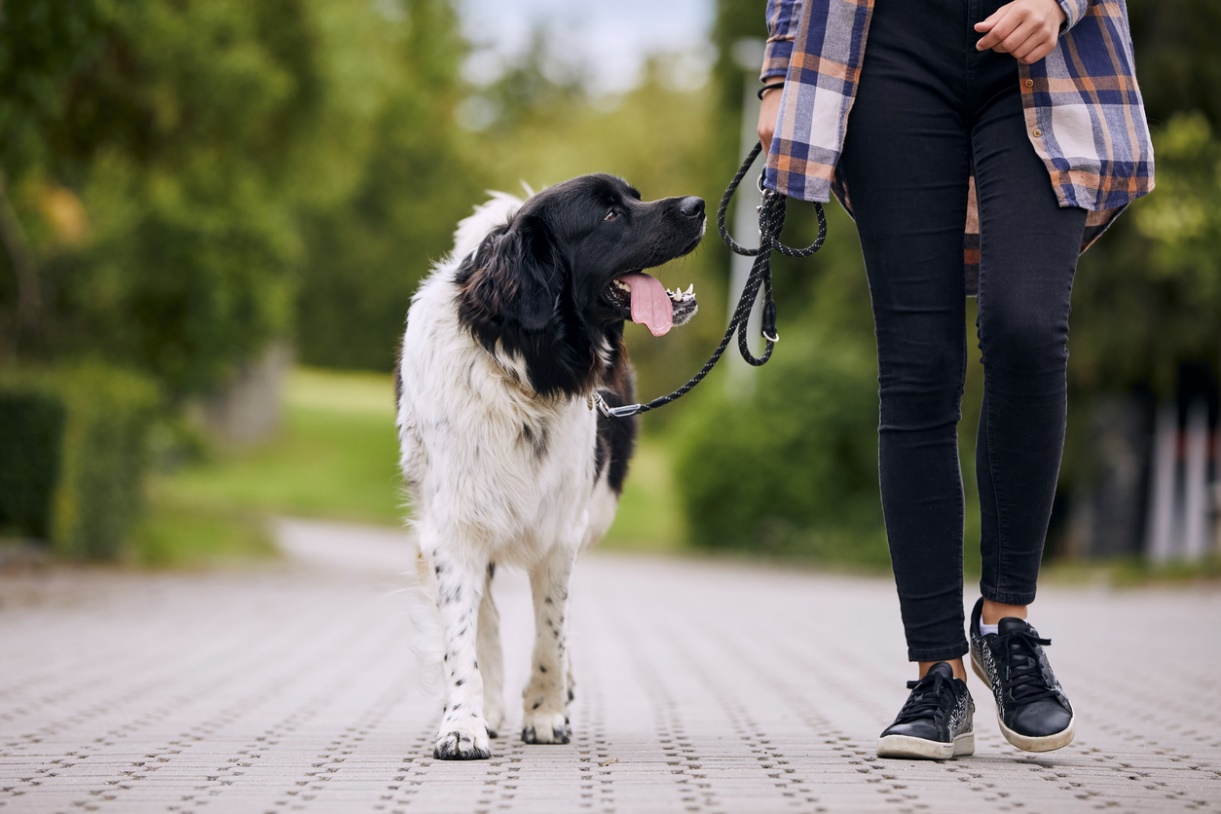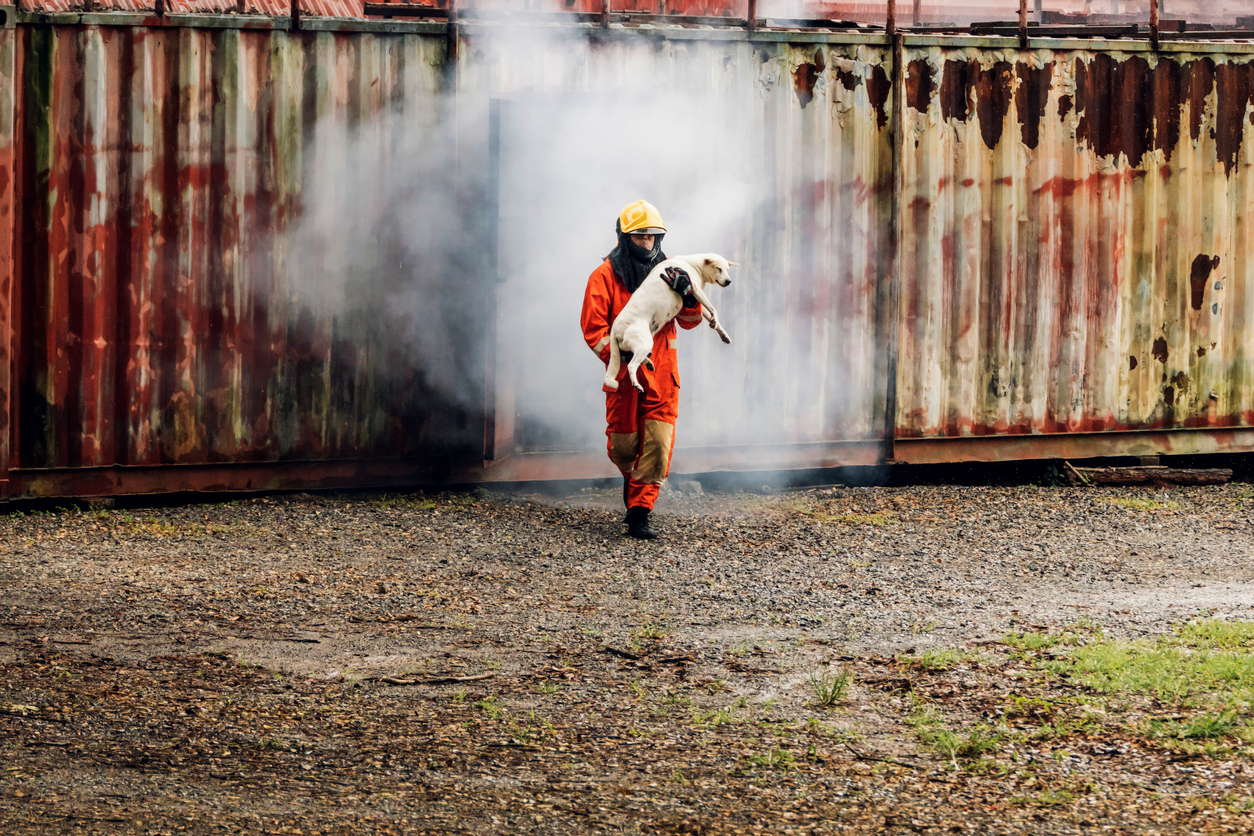The old adage “March comes in like a lion and out like a lamb” brings with it a subtle hint of truth during springtime–particularly with farmers and homesteaders. More specifically, those who have cows, sheep, and goats under their care. While spring is a time when flowers bloom and people are venturing outside to escape winter’s captivity, it is also the time our farm animals give birth and raise their offspring.
Being a mother is hard work, and sometimes requires an extra helping hand. In honor of spring and Mother’s Day, here are several tips from our veterinary professionals for knowing when and how to intervene during calving, lambing, and kidding this season!
Gestation
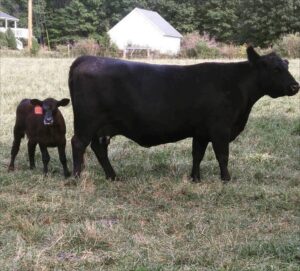 For any animal, the most important aspect of breeding is knowing the due date. If any problems arise, this is the first piece of information your veterinarian will want to know in order to properly assess the patient and their birthing process. Gestation for cows is approximately 9 months or 280-290 days from being bred, while goats and sheep have a much shorter gestation period–goats averaging around 150 days and sheep averaging around 145 days (Mee 2022). While there are many factors that may affect gestation length, the primary influences are breed, gender, and considerable traits from both the sire and the dam (Mee 2022). Any pregnancy that is prolonged beyond these estimated time frames should be brought to your veterinarian’s attention.
For any animal, the most important aspect of breeding is knowing the due date. If any problems arise, this is the first piece of information your veterinarian will want to know in order to properly assess the patient and their birthing process. Gestation for cows is approximately 9 months or 280-290 days from being bred, while goats and sheep have a much shorter gestation period–goats averaging around 150 days and sheep averaging around 145 days (Mee 2022). While there are many factors that may affect gestation length, the primary influences are breed, gender, and considerable traits from both the sire and the dam (Mee 2022). Any pregnancy that is prolonged beyond these estimated time frames should be brought to your veterinarian’s attention.
Signs of Struggle
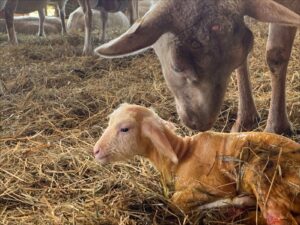 The majority of live births on the farm happen naturally without any need for intervention, but it is important to notice and understand the signs of potential dystocia, or a difficult birth, taking These signs include:
The majority of live births on the farm happen naturally without any need for intervention, but it is important to notice and understand the signs of potential dystocia, or a difficult birth, taking These signs include:
- pushing/straining for more than 30 minutes with no progress
- visibly seeing a birth sac with no labor in process.
- the mother appearing distressed and fatigued
- excessive bleeding
- if the placenta has not been passed within 12 hours of parturition.
While there are more signs than the ones listed, these are the most common and concerning symptoms of dystocia. Contact your veterinarian right away if you notice any of these signs.
Essential Supplies to Have on Hand
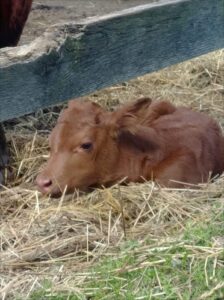 Before the birthing process begins, it is important to establish a safe and clean area to provide protection from the elements. These areas should be dry and well-ventilated, while bedding must be kept fresh to prevent excessive buildup of manure and debris (Weaver 2021). Some particularly useful supplies to have on hand prior to birthing season are:
Before the birthing process begins, it is important to establish a safe and clean area to provide protection from the elements. These areas should be dry and well-ventilated, while bedding must be kept fresh to prevent excessive buildup of manure and debris (Weaver 2021). Some particularly useful supplies to have on hand prior to birthing season are:
- latex/nitrile gloves
- fresh towels
- antimicrobial soap
- Halters
- heat lamps
- iodine (to dip the naval)
- milk bottles, powdered milk, and colostrum
- injectable selenium and Vitamin E (depending on your location–some areas may require additional supplementation) (Weaver 2021).
As always, it is crucial to have an emergency veterinarian’s number on hand in case any complications arise during the birthing process.
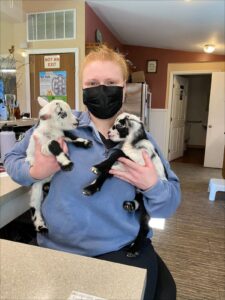 Babies!…Now What?
Babies!…Now What?
Depending on the nature of your farm–whether it be for production, homesteading, or hobby–calves, lambs, and kids generally require injections soon after birth, and certain vaccines by 8 weeks of age. Very few animals are born naturally polled (no horns), so if dehorning your kids, calves, and some breeds of lambs is something you require, the ideal timeframe to dehorn is before the horns fully erupt through the skin; this can range between 1-3 weeks of age. Vaccine and castration can also be done at the same time if needed.
Nurturing New Beginnings: Ensuring the Health and Happiness of Farmyard Newborns

Spring is a season of hope and renewal, but it also demands vigilance and preparedness, especially for those caring for farm animals and their offspring. By understanding gestation periods, recognizing signs of labor complications, and equipping yourself with essential supplies, you can ensure a smooth and successful birthing season. Remember, the health and well-being of both mother and baby are paramount, so don’t hesitate to seek veterinary assistance if needed. For professional guidance and support in caring for your farm animals, reach out to All Animal Veterinary Services in Ulster County, NY. Our experienced team is dedicated to providing compassionate care for all your veterinary needs. Let’s work together to nurture healthy beginnings and thriving futures for your farmyard family.
Warm Regards,
Dr. Eleanor Acworth & Team
All Animal Veterinary Services
845-255-2900
References
Mee, J. F. (2022, October). Overview of prolonged gestation in cattle and sheep –
reproductive system. Merck Veterinary Manual. https://www.merckvetmanual.com/reproductive-system/prolonged-gestation-in-cattle-and-sheep/overview-of-prolonged-gestation-in-cattle-and-sheep
Weaver, Andrew. (2021, September 21). Lambing and kidding cheat sheet for beginning
small ruminant producers. NC State Extension Publications. https://content.ces.ncsu.edu/lambing-and-kidding-cheat-sheet-for-beginning-small-ruminant-producers
photos courtesy of:
Willow Pond Sheep Farm https://www.willowpondsheep.com
Full Moon Farm https://www.fullmoonfarmny.com
All Animal Veterinary Services photo collection


